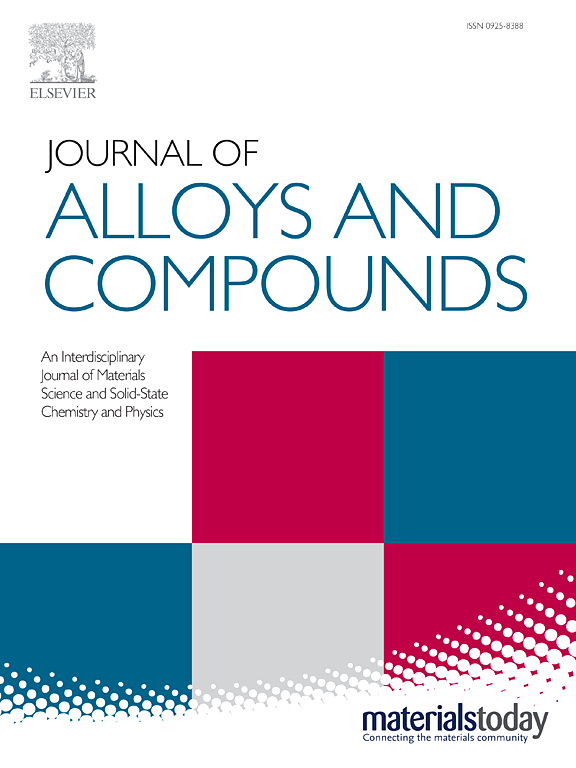Alternative plasmonic Ti-doped HfN thin films by reactive co-magnetron sputtering and their SERS performances
IF 5.8
2区 材料科学
Q2 CHEMISTRY, PHYSICAL
引用次数: 0
Abstract
Titanium-doped hafnium nitride (Ti-doped HfN) thin films were developed as an alternative surface-enhanced Raman scattering (SERS) substrate using a reactive dual-cathode DC unbalanced magnetron co-sputtering system. The thin films were deposited on (100) silicon wafers with the Ti doping concentration varied by adjusting the DC current of the Ti target. Each physical property was characterized using field-emission scanning electron microscopy, atomic force microscopy, energy-dispersive X-ray spectroscopy, grazing-incidence X-ray diffractometry, near-edge X-ray absorption spectroscopy, spectroscopic ellipsometry, and confocal Raman spectroscopy. Approximately 7.3 at% of Ti atoms were well incorporated into the cubic HfN nano-films, allowing variation in N content. The impact of Ti doping and %N/(%Ti + %Hf) on physical structures, crystal structures, electronic properties, optical properties, and SERS performances of the N rich thin films was thoroughly investigated. The findings showed that the increase in the %N/(%Ti + %Hf) from 1.5 to 3.0 caused the decrease in thickness, conduction band minimum, quality factor at 785 nm, maximum electron loss function peak height and Raman intensity, while it caused the increase in average crystalline size and lattice constant. The plasmonic properties of Ti-doped HfN films were compared with conventional plasmonic materials and binary nitride materials. Additionally, it was confirmed that plasmonic performances could be tuned by changing the chemical composition, notably the %N/(%Ti + %Hf). This research focused on how the chemical composition affects the plasmonic performances and SERS signal in Ti-doped HfN thin films.

求助全文
约1分钟内获得全文
求助全文
来源期刊

Journal of Alloys and Compounds
工程技术-材料科学:综合
CiteScore
11.10
自引率
14.50%
发文量
5146
审稿时长
67 days
期刊介绍:
The Journal of Alloys and Compounds is intended to serve as an international medium for the publication of work on solid materials comprising compounds as well as alloys. Its great strength lies in the diversity of discipline which it encompasses, drawing together results from materials science, solid-state chemistry and physics.
 求助内容:
求助内容: 应助结果提醒方式:
应助结果提醒方式:


